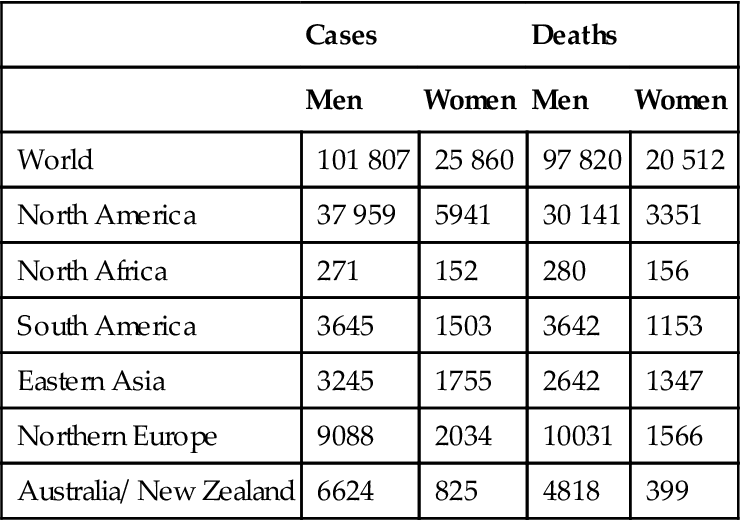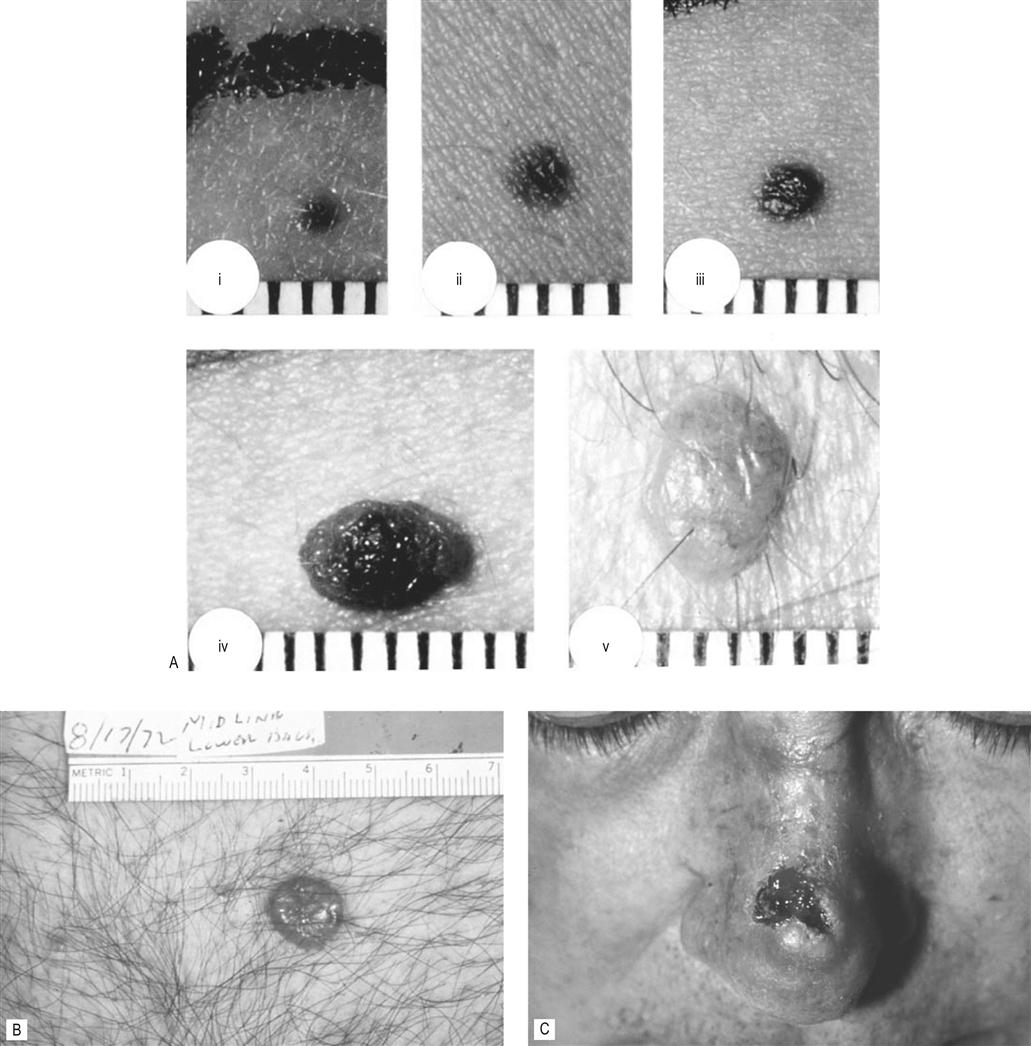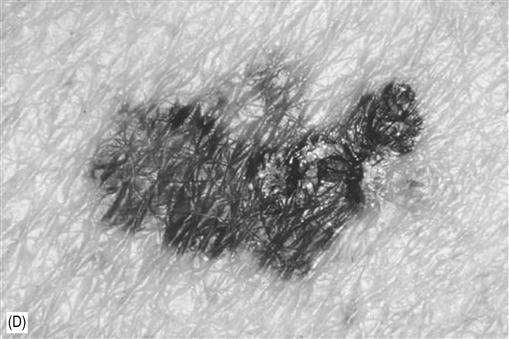Neoplasms of the skin
Stephen A. Gudas
Incidence and clinical relevance
Skin cancer is one of the most common forms of cancer in humans and kills an estimated 12 650 individuals annually (Siegel et al., 2013). In total, 53% of skin cancer-related deaths occur in those over the age of 65 (Syrigos et al., 2005). The worldwide variation in the number of cases of melanoma (one type of skin cancer) and the subsequent deaths per year for both sexes is presented in Table 37.1 (Globocan, 2008).
Table 37.1
Worldwide variation in the number of cases of skin melanoma and subsequent deaths
| Cases | Deaths | |||
| Men | Women | Men | Women | |
| World | 101 807 | 25 860 | 97 820 | 20 512 |
| North America | 37 959 | 5941 | 30 141 | 3351 |
| North Africa | 271 | 152 | 280 | 156 |
| South America | 3645 | 1503 | 3642 | 1153 |
| Eastern Asia | 3245 | 1755 | 2642 | 1347 |
| Northern Europe | 9088 | 2034 | 10031 | 1566 |
| Australia/ New Zealand | 6624 | 825 | 4818 | 399 |

From the Globocan, 2008 database. www-dep.iarc.fr/GLOBOCAN_frame.htm.
Skin cancer tends to be a disease of the middle-aged and elderly (Stevenson & Ahmed, 2005), and age alone should not be an obstruction to seeking optimal treatment. The most common forms of skin cancer are basal cell carcinoma (BCC), squamous cell carcinoma (SCC) and malignant melanoma. Other rarer types occur and the skin can also be the site of metastatic tumors. Sarcomas of the skin can occur and are characterized by clinical heterogeneity. Cutaneous angiosarcoma, myxofibrosarcoma and leimyosarcoma arise predominantly in elderly patients (Mentzel, 2011).
When working with patients, all practitioners should be ever-vigilant for any skin changes that may warrant further evaluation. Careful inspection of the skin of any body part under examination should be part of a complete physical therapy evaluation. Figure 37.1 depicts the differences between common skin moles and skin cancers. Uncertainty in skin cancer risk perceptions is more common in the elderly (Buster et al., 2012). Also, when skin lesions present in the elderly, one needs to examine the presentation, contributing factors and associated systemic disorders (Na et al., 2012). BCC, the most common of the skin cancers, occurs primarily on sun-exposed skin surfaces (those areas of skin exposed to ultraviolet light). Although historically this disease affected more men than women, there is currently only a slight male preponderance. It is commonly a disease of older individuals; however, it is becoming more common in younger people, with some cases being diagnosed in only the third decade of life. Increased sun exposure, as culturally defined, and depletion of the protective ozone layer in the atmosphere, believed to be a result of increased air pollution, are both believed to play a role in the etiology of this disease. Those who work outdoors or who participate in extensive outdoor recreation are at most risk; cumulative exposure to ultraviolet light over time is the strong unifying factor. Ionizing radiation can also be implicated as causative; the resultant BCC occurs after a long latency period and is usually in the area of previous irradiation. The immune system may play an, as yet, undefined role but this is less well appreciated compared with SCC.
< div class='tao-gold-member'>
Stay updated, free articles. Join our Telegram channel

Full access? Get Clinical Tree









